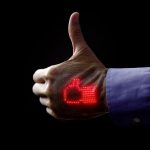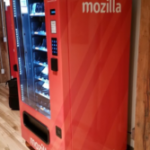6 benefits of IoT for hospitals and healthcare
6 benefits of IoT for hospitals and healthcare

There is no doubt that the Internet of Things is transforming the healthcare industry completely by redefining how apps, devices and people interact and connect with each other in delivering healthcare solutions. That is, IoT is constantly offering new tools as well as efficiencies that make up an integrated healthcare system with the view of ensuring patients are cared for better, health care costs are reduced significantly and treatment outcomes are improved.
Thus, it is a conglomeration of multiple opportunities that wellness promoters and hospitals can tap into even as they optimize resources through automated workflows as well as process excellence. For instance, a majority of hospitals use IoT for asset management and controlling humidity and temperature within operating rooms.
The major advantages of the Internet of Things in that healthcare organizations can take advantage of include the following:
- Decreased Costs–When healthcare providers take advantage of the connectivity of the healthcare solutions, patient monitoring can be done on a real time basis, thus significantly cutting down on unnecessary visits by doctors. In particular, home care facilities that are advanced are guaranteed to cut down on hospital stays and re-admissions.
- Improved Outcomes of Treatment – Connectivity of health care solutions through cloud computing or other virtual infrastructure gives caregivers the ability to access real time information that enables them to make informed decisions as well as offer treatment that is evidence based. This ensures health care provision is timely and treatment outcomes are improved.
- Improved Disease Management – When patients are monitored on a continuous basis and health care providers are able to access real time data, diseases are treated before they get out of hand.
- Reduced Errors – Accurate collection of data, automated workflows combined with data driven decisions are an excellent way of cutting down on waste, reducing system costs and most importantly minimizing on errors.
- Enhanced Patient Experience–The connectivity of the health care system through the internet of things, places emphasis on the needs of the patient. That is, proactive treatments, improved accuracy when it comes to diagnosis, timely intervention by physicians and enhanced treatment outcomes result in accountable care that is highly trusted among patients.
- Enhanced Management of Drugs –Creation as well as management of drugs is a major expense in the healthcare industry. Even then, with IoT processes and devices, it is possible to manage these costs better.
The risks of IoT in healthcare
Although the Internet of Things is transformational in the health care sector, it also presents a number of challenges given that health data is sensitive. As such, when shared inappropriately, health information may damage reputations or destroy careers amongst other things. Furthermore, streamlining and digitizing health data and its subsequent expanded use is likely to strain the data centers.
As patient monitoring is expanded to the use of devices that are wearable and at home, clinicians that are charged with monitoring those chronic conditions as well as the inclusion of predictive analysis increases demands on the data center and facility infrastructure.

Kevin Patel, Service assurance technology analyst, Xangati.
Proprietary medical services inability to share data between each other requires that a play and play solution that has a standard language be developed to promote information sharing.
Security of data is also another risk factor that is likely to increase with an increase in the level of data being shared. The volume of data is bound to increase significantly hence the need to shield this information from cyber attacks.
The architecture of the Internet of Things is a powerful analysis engine requires a hybrid cloud environment or hypervisor (Virtualized infrastructure) to run. These tools are crucial in ensuring the auditing of network compliance as well as ensuring real time alert of anomalies that include user access, network traffic, system errors and change management activities.
Ultimately, the Internet of Things is here to stay as its popularity is expected to increase significantly, as health care providers seek to leverage technologies with the view of improving efficiency. IoT in healthcare is pegged on connectivity, ensuring information is available to elicit an action. As such, it is set to grow in hospitals, even as data sharing continues to be simplified.
The author is a service assurance technology analyst at Xangati. A self-proclaimed tech geek, with a passion for the ever-changing world of virtualized and hybrid-cloud environments. Kevin has a passion for dissecting tech topics such as virtualization, data center migration, storage, networking and cloud. On his days off, he can be found watching sci-fi movies, rock climbing or volunteering.
The post 6 benefits of IoT for hospitals and healthcare appeared first on ReadWrite.
(25)














